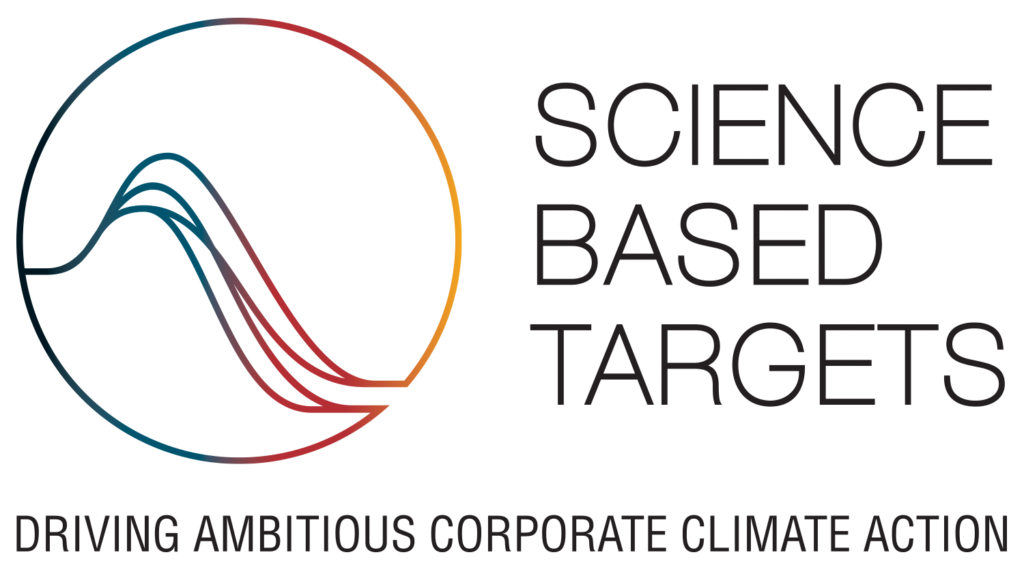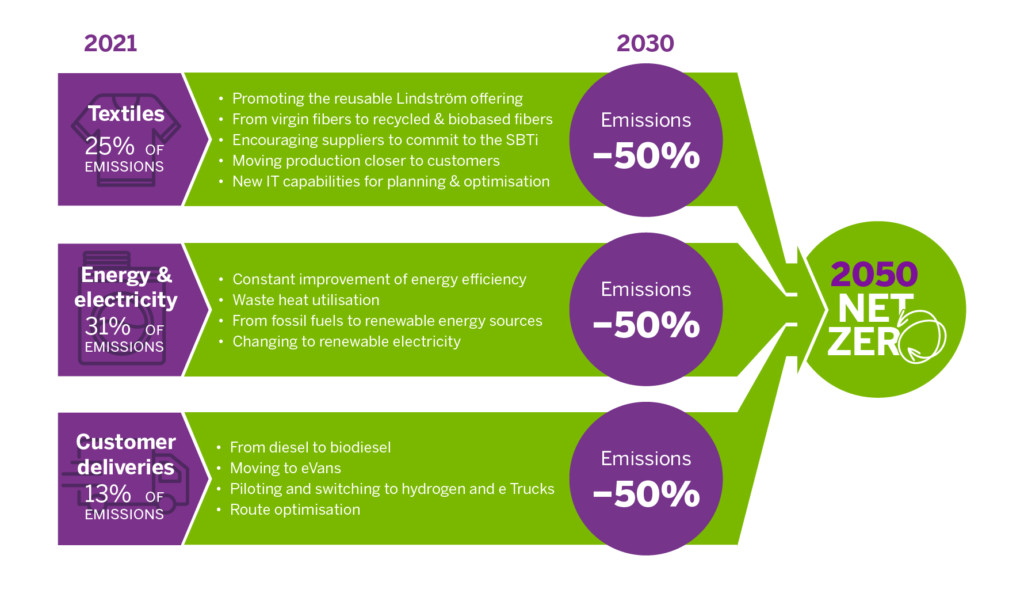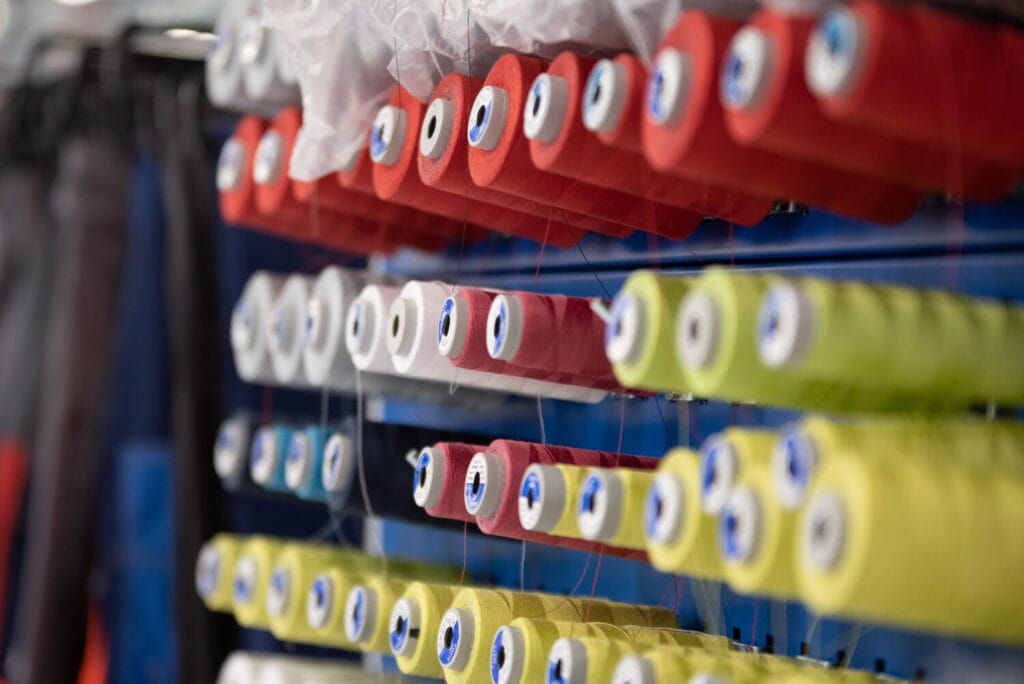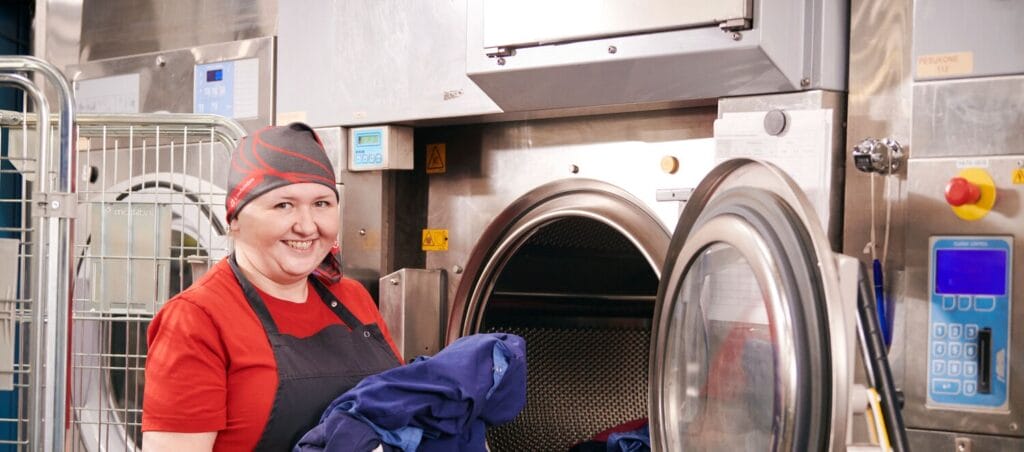
Lindström’s climate targets approved by the Science Based Targets initiative

Lindström is among the pioneers in the textile industry, whose targets for greenhouse gas reduction and net-zero emissions have been approved by the Science Based Targets Initiative. The global community has committed to limiting global warming to 1.5 °C to avoid catastrophic climate change. The SBTi assists companies in setting and attaining ambitious emission reduction targets based on the latest climate science.
Our target is to is to reduce greenhouse gas emissions by 50% across the value chain by 2030, ultimately achieving net-zero emissions by 2050. “This accomplishment is the result of a dedicated team effort in calculating greenhouse gas emissions and developing a plan for their reduction. We identified the key areas with the greatest impact on our emissions and made a plan how to reduce those,” explains Taru Jokinen, Director for Concept Development and Sustainability who was leading the work at Lindström.
The same reliable service with half the emissions by 2030
Inari Laveri, Manager of Quality & Compliance, who coordinated the extensive calculations and process with the SBTi, highlights the clear advantages for our customers: “We can now support our customers in their own sustainability targets by providing precise emission data from our services and demonstrating tangible progress in emission reduction. In practice, we can offer our customers the same reliable service while cutting emissions in half by 2030.”
Over the next decade, customers will witness several sustainability improvements in our services. Recycled and biobased materials will increasingly replace virgin materials in the textiles. These textiles will be manufactured at a shorter distance by suppliers who are committed to reducing their emissions. The energy used for maintenance and washing will increasingly come from renewable sources. Deliveries of textiles will rely more on e-vehicles, biogas, and hydrogen trucks. To reduce emissions, renewable biodiesel will be used until alternative options become available.
“The SBTi mechanism is cleverly designed because it forces you to get the whole value chain on board. Achieving emission targets across all scopes would be impossible without the commitment of our major suppliers to reduce their emissions as well,” notes Laveri.
Our validated targets provide credibility and transparency to customers and other stakeholders, and help customers report progress towards their goals. By setting and achieving ambitious emission reduction targets, we can support our customers in their own sustainability aspirations, drive sustainability throughout the value chain, and contribute to a more sustainable future for all.

LINDSTRÖM’S COMMITMENT
Lindström Group commits to reach net-zero GHG emissions across the value chain by 2050 from a 2021 base year.*
Near-Term Target: Lindström Group commits to reduce absolute Scope 1 and 2 GHG emissions 50% by 2030 from a 2021 base year.* Lindström Group also commits to reduce absolute Scope 3 GHG emissions 50% within the same timeframe.
Long-Term Target: Lindström Group commits to reduce absolute Scope 1 and 2 GHG emissions 90% by 2050 from a 2021 base year.* Lindström Group also commits to reduce absolute Scope 3 GHG emissions 90% within the same timeframe.
*The target boundary includes land-related emissions and removals from bioenergy feedstocks.
Glossary
Science Based Targets initiative is a partnership between the CDP, the United Nations Global Compact, the World Resources Institute (WRI) and the World Wide Fund for Nature (WWF). It drives ambitious climate action in the private sector by enabling organizations to set science-based emission reduction targets.
Scopes of emissions refers to the three scopes of emissions used to report the greenhouse gas (GHG) emissions. Scope 1 represents the GHG emissions of company’s direct operations. Scope 2 emissions are the indirect GHG emissions from the generation of purchased energy. Scope 3 emissions are the GHG emissions in the value chain outside of company’s own operations.
Net zero means cutting greenhouse gas emissions to as close to zero as possible, with any remaining emissions re-absorbed from the atmosphere by, for instance, oceans and forests. The Net Zero standard by the Science Based Targets initiative requires companies to reduce emissions by more than 90% and use permanent carbon removal and storage to counterbalance the final residual emissions that cannot be eliminated.





